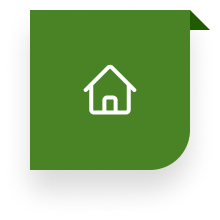What is Open Education?
What is Open Education?
Student-centered education, tailored to individuals, with the goal of holistic development.
The theoretical foundation of Open Education, characterized as 'individualized learner-centered education,' draws from Western informal education principles. However, Young Hoon's interpretation of Open Education differs slightly. Professor Lee Yong Sook of Duksung Women’s University presented her thesis on the goal and prerequisites of Open Education, emphasizing the "whole-person development of children." This thesis serves as the theoretical underpinning for Young Hoon's acknowledgment of children's diversity and its commitment to providing high-quality education through diverse teaching-learning activities tailored to different subjects and learning content.
Professor Lee Yong-sook outlines the five core tenets of Open Education through a conceptual model:
1. The 'whole person development' of children targeted by Open Education should naturally unfold within a pleasant school environment.
2. Open Education places value on basic skills education, creativity education, and character education, which are acquired through daily campus life, including subject activities, extracurricular activities, breaks, lunch breaks, self-study hours, and after-school hours.
3. The essential conditions for Open Education encompass individualization, diversity, autonomy, flexibility, and active interactive teaching-learning.
4. Students' learning should strike a good balance between self-directed and cooperative learning.
5.The advancement of Open Education can be realized through robust support in terms of school facilities, environment, resource utilization, and school management.
Open Education Conceptual Model*Professor Lee Yongsook, Lee Seongon
Utilization of Resources
- · Space Utilization Efficiency
- · Multi-Purpose Learning
Positive School Environment
Subject/Extracurricular Activities
- · Individualization
- · Diversity
- · Autonomy
- · Flexibility
- · Interactive Learning
Basic Skills Learning
Collaborative LearningEnhancement of Facilities and Environment
- · Diversification of Resources
- · Digitalization of Education
(Utilizing Multimedia)
Innovative School Governance
- · Democratization of School Governance
- · Support-Centered School Administration
- · Efficient Parental Involvement
Characteristics and Educational Impact of Open Education
Student-Centered Learning Tailored to Individual Abilities
Teachers design a variety of language learning activities and prepare necessary resources and materials to allow students to choose content that matches their abilities and preferences. This approach fosters personalized learning, moving away from one-sided information delivery and uniform classes.
"Learning Center" offering opportunities through diverse activities
A learning center is operated to provide opportunities for students to work according to their abilities and interests. In this open educational space, students can engage in a variety of activities such as listening, reading, writing, drawing, mathematics, computers, experiments, and music. This environment allows them to cultivate a sense of ownership by working responsibly toward their self-established learning goals.
“Theme-Based Learning" integrating
all subject
This form of learning integrates content from various subjects based on the language skills of reading, writing, listening, and speaking. Theme-Based Learning combines multiple disciplines, fostering comprehensive thinking skills by connecting content from subjects such as Science, Social Studies, Physical Education, and Ethics
Diverse Learning Methods and Programs
Open Education includes a variety of programs tailored to the diverse needs of students. These programs encompass "group activities," where the entire class studies together; "individual learning," where small groups of two to eight students work collaboratively; "cooperative learning," which involves asking questions, discussing, and working together; "uphill learning" to enhance basic academic skills such as reading, writing, and arithmetic; and "open time," where students can freely choose tasks and conduct their own research.




